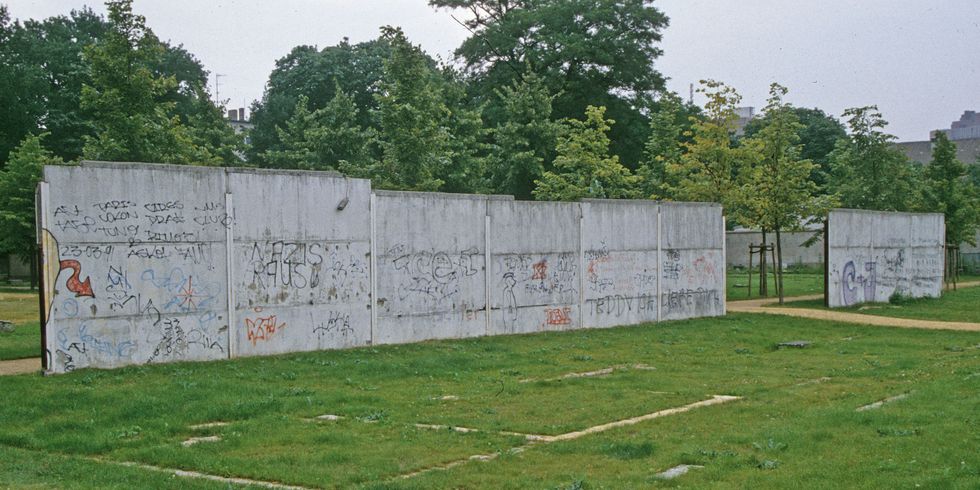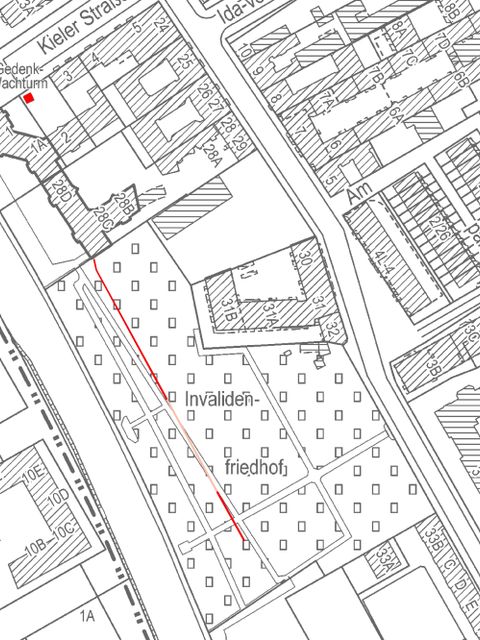The cemetery Invalidenfriedhof
The cemetery Invalidenfriedhof established in 1748 on the orders of Friedrich II for the Invalidenhaus hospital is bordered by the embankment wall of Berlin’s Spandauer Schifffahrtskanal. The sector boundary drawn by the Allied powers after the Second World War ran right down the middle of the canal. Invalidenfriedhof suffered serious damage as the GDR border fortifications were gradually expanded, starting on 13 August 1961, and entire sections of the cemetery (E, F, G) were cleared to make way for the border strip. 1973 and 1975 in particular saw the removal of the graves and vegetation in this area. Countless gravestones in the restricted area in front of the Hinterland wall (inner wall) also ended up falling victim to this campaign. The cemetery’s western boundary, a brick wall erected along the bank of the canal in 1902, was reinforced by a fence to serve as a border wall. The graves of military figures like General Gerhard David von Scharnhorst, whose monument was designed by Karl Friedrich Schinkel, and the freedom fighter Friedrich Friesen, who played a vital role in the Wars of Liberation (1813-1815) and were also revered by the GDR, helped to save Invalidenfriedhof from being razed completely.
A total of about 180 meters of individual sections of the Hinterland wall and a somewhat longer section of the patrol track (border control road), both of which had sliced through the cemetery since 1975, have been preserved and were given protected status in 1990. The wall’s concrete was restored in 2003 by the Landesdenkmalamt (Berlin Monument Authority) and has been repainted with the gray-framed, long white rectangles typical of the eastern side of the Hinterland wall.
Since Invalidenfriedhof, the home of many important monuments to distinguished figures from eighteenth and nineteenth-century Prussian and German military history, is also an important historic garden, a compromise had to be reached on preserving elements of the former border strip while restoring Invalidenfriedhof as a garden monument. Today the former “no man’s land” is part of the riverside promenade running from the bridge Sandkrugbrücke near Hamburger Bahnhof to the harbor Nordhafen along the old sector boundary.


